
24 minute read
On Set
CSC Welcomes New Sponsor Quasar
The CSC is pleased to announce that advanced lighting instrumentation company Quasar Science LLC has joined the society as its newest sponsor. Founded by a small group of IATSE lighting technicians in 2013, Quasar, in celestial brilliance, bust upon the film and television industry as the world’s first motion picture compatible LED light bulb company. Set lighting has never been the same since. Located in Los Angeles, Quasar, through its product innovation, immediately became a global leader in LED technology and logistics and is credited as one of the foremost reasons behind the new light source becoming an industry staple. In the hands of cinematographers, Quasar LED lights and accessories are powerful and versatile tools helping them to create their cinematic visions. A hearty CSC welcome aboard to Quasar Science!
B camera team on location with Netflix’s Jupiter’s Legacy. Left to right: dolly grip Stewart Grayburn, camera/Steadicam operator Richard Wilmot, 2nd AC Stephan Maia, 1st AC David McKane.

Credit: Courtesy of Richard Wilmot

Cinematographer and A camera operator David BercoviciArtieda on the set of The College Admissions Scandal.
Credit: Sergei Bachlakov

Associate member Justin Black shooting a condo commercial produced by PUREBLINK.
On Set
Director of photography and associate member Chris M. Oben (far right) shares a laugh with the cast and crew on the green screen set of Cassie and Friends. Clockwise from left: Scott Aiken (sound) Kirsten Niedtner (puppeteer), Cam Hayduk (director), Kim Morales (production coordinator), Liz Kirkland (puppeteer), Rob Piercy (1st AC), Randi Edmunson (puppeteer).
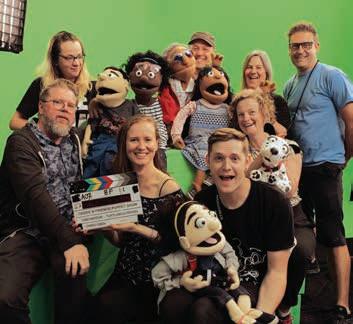
Credit: Courtesy of TurtleBox Productions Cinematographer and associate member Kevin Rasmussen shooting a M.A.D.D. PSA (Jack Royal Productions).
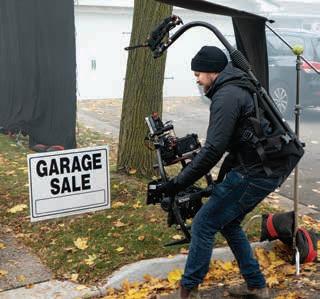

he new series La faille follows Sergeant-Detective Céline
Trudeau (Isabel Richer), who is assigned to a bizarre murder case in the small mining town of Fermont in northeastern
Quebec. Everyone is seemingly a suspect in the crime that has shaken up the municipality and brought old wounds to the surface. The eight-episode series, produced by Pixcom in collaboration with Quebecor Content, is directed by Patrice Sauvé (Le monstre) and features Richer (Babine, Eldorado) and Maripier Morin (The Fall of the American Empire) among its principal cast. Series DP Claudine Sauvé csc (who is of no relation to the director) describes how the stark setting of the northern town inspired the look of the show. During her first scouting trip to Fermont by plane, Sauvé was impressed by the landscape even from the air. “You’re on the plane looking down and you see snow – it is white, white, white, and then there is a strong contrast with the dark forest, and then you are impressed by a huge hole in the earth, the mine site, one of the biggest in North America, the size of 5,000
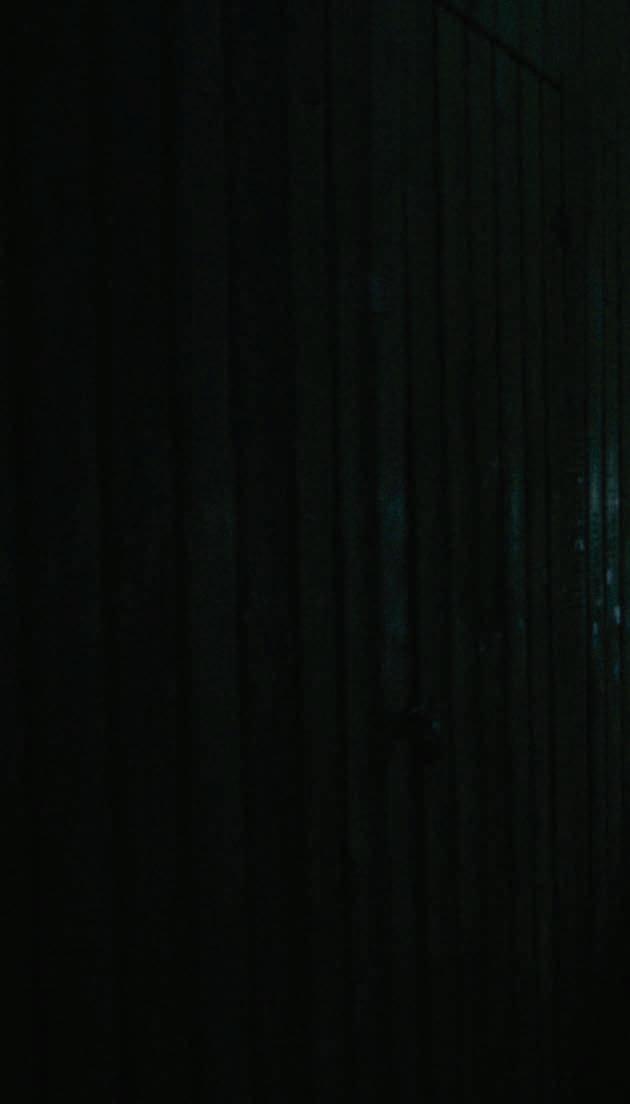
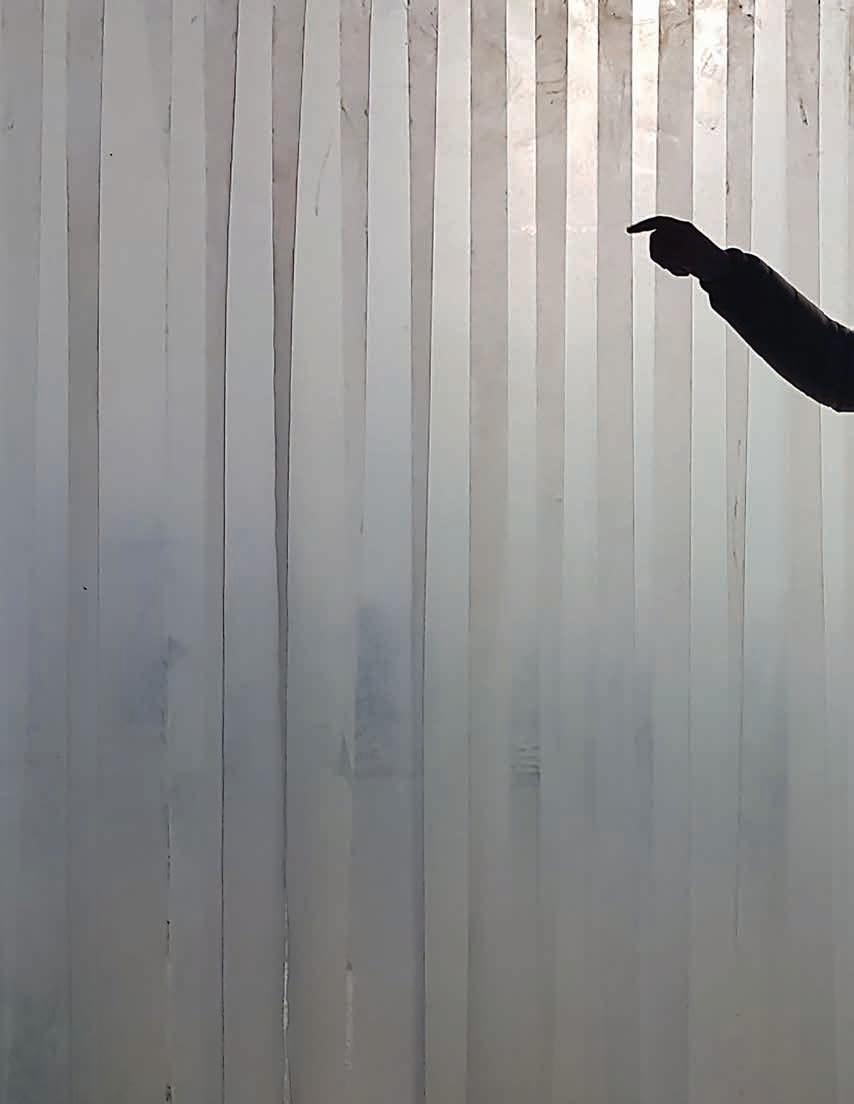
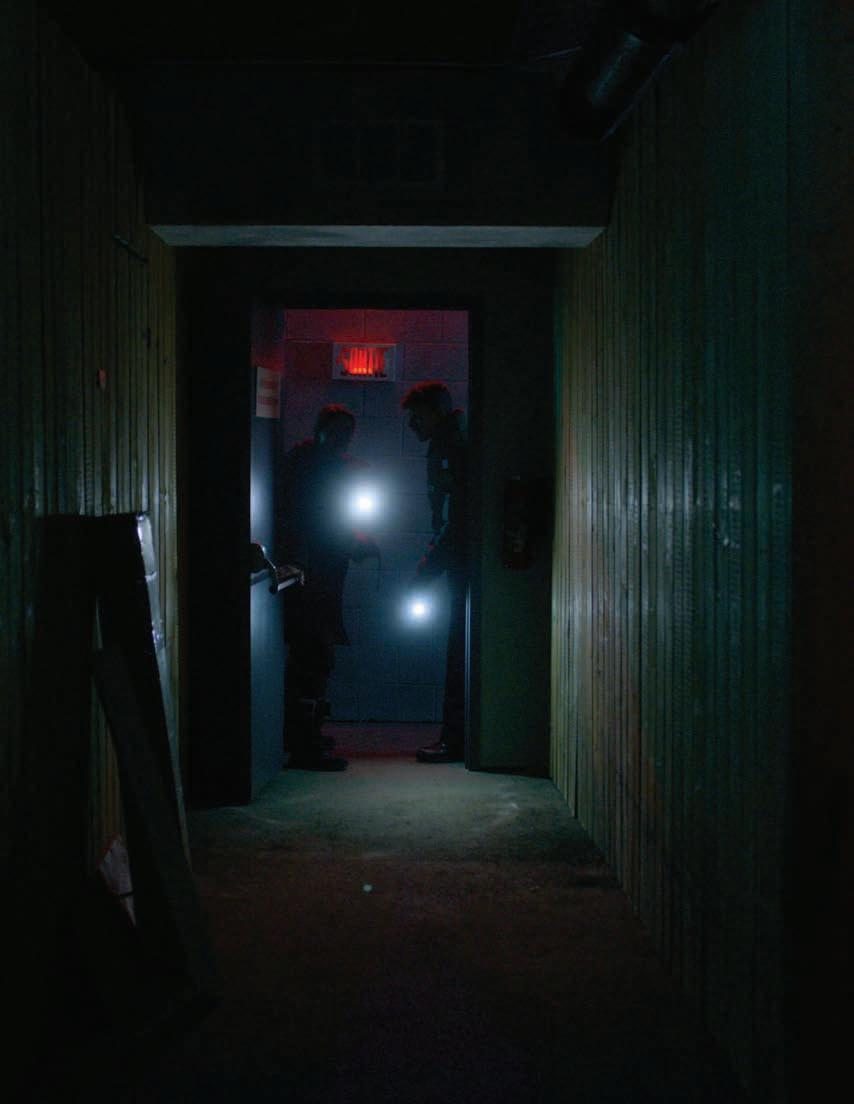

Actors Alexandre Landry, Isabel Richer, Mélanie Langlais and David Savard in the recreated Fermont Arena Zamboni room transformed into a morgue.

Fermont and the Wall.
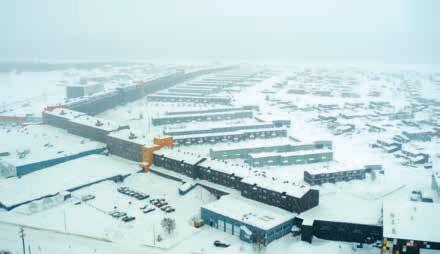
football fields,” she says. “You keep going and there is Fermont, a little city in the middle of infinite white snow, dark blue-green spruce trees and threads of orange from the rust coloured dust of the mine,” which became the colour palette of the show. In addition to the mine, one of Fermont’s most notable features that is used in La faille is a massive residential and commercial structure 1.3km long, built in the 1970s to shelter the townspeople from glacial arctic winds. The huge self-contained structure houses apartments, as well as amenities like a police station, town hall, kindergarten, arena, hair salon, school and a strip club. This landmark – known as the Wall – becomes the crime scene in the series after the body of a local stripper is found in the ventilation system in the basement. “The Wall is an important character in the show,” Sauvé explains. The production therefore had to find a building that could double as the interior of the structure. “The thing is it looks pretty much like a very long shopping mall,” the DP says. “So we needed to find an old empty mall from the ‘70s in the Montreal area to recreate it, and we were very lucky to find one.” Once the location was selected, the next challenge was to find a way to photograph it aesthetically. “It can be really boring to shoot in a shopping mall for many, many weeks,” Sauvé says. “I didn’t want to light it with bright fluorescents, with no ambience. Also, we didn’t want our series to look like ‘Murder at the Mall.’ But we wanted it to look realistic at the same time, and a bit gritty, like the rocks of the mine. So I kept thinking about contrast, inspired by nature outside. Again, blue-green dark forest, warm rust and bright white snow. You know when you’re
outside for hours, then you go inside, and it always feels really dark? That is the feeling I was looking for. I wanted the audience to feel like it’s a bit scary when they follow our characters inside. You are not able to see everything that happens in every corner. When you go back outside, you have to squint your eyes, and you are blinded, literally and figuratively, for a moment. And during these moments, terrible things can happen, and nobody is aware. “So I designed it in a way that when my characters are walking in the Wall, they’re always crossing contrasts of light and colours,” she explains. “Most of the fluorescents on the ceiling of the Wall’s set were a mix of rows of industrial Warm White and Daylight Deluxe, so I was able to change the ambiance quickly and my characters were always in nice contrasts of colours everywhere in this huge set. I had to visualize and prelight it piece by piece as the art department was dressing every little corner.” For the police station, “we chose the biggest empty room in the mall and designed it in the way we wanted,” she says. “We imagined it with a lot of windows and transparency so you can feel the outside, you feel the brightness and the snow. And you see the interior of the Wall from the other side. I designed the practical lights hanging from the ceiling with Jean Babin, the production designer, in a way that I could put my Astera tubes inside and then control their colour and intensity with my gaffer Hugo Roy from his iPad, which has been a real revolution for me in my approach to lighting over the past year or so, and it gave me so much joy and freedom in subtle adjustments and creation.” The set was designed much like a lighting grid on the ceiling but made of practicals that are visible on screen. “These suspended lights were really focused,” Sauvé says. “So I also used a lot of other practical lights on the police officers’ desks. Most of the time, I was bouncing them directly on the wooden desks to keep a soft warm ambiance on the characters’ faces. We also added small gold bounces in corners to accentuate it. And I kept working on these warm accents of light in post with my colourist Vickie-Lynn Roy.” During the first week of production, it was too cold for the crew to shoot in Fermont, so they shot in the town of Saint-Zénon, roughly two hours from Montreal. But it was “still minus 35 and there was tons of snow, so the feeling of being lost in northeastern Quebec in the middle of nowhere was exactly the same. In altitude, Fermont is supposed to be the highest city in Quebec, and the other one fighting for the title is Saint-Zénon,” according to Sauvé. “During that first week, we shot in a small cabin on a very isolated lake in front of a beautiful cliff, really far from the road. We had to get around and bring all the equipment, cast and crew on Ski-Doos, and there was no electricity,” the DP recalls. “I could only use small generators and batteries, so I used a lot of LED lights. I designed all my lighting with SkyPanels from the exte
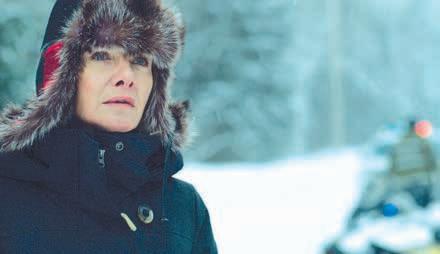
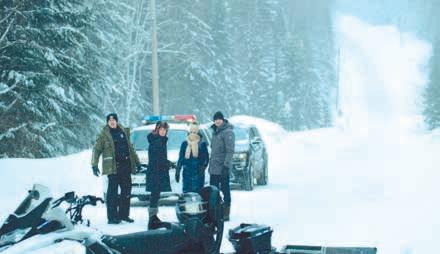

Top: Actress Isabel Richer. Middle: Actors Alexandre Landry, Isabel Richer, Maripier Morin and Jean-Philippe Perras. Bottom: An aerial view of a crime scene.
Top: Actor Marc Messier at the mine site. Bottom: Claudine Sauvé csc on set with Yanka Pelletier and Nicolas Mignot.
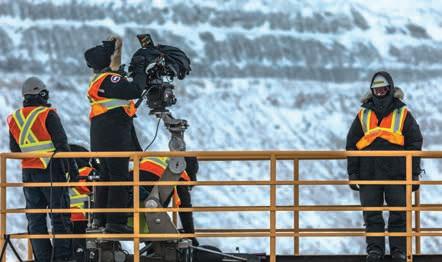

riors, bouncing from the windows, and Astera tubes hidden in the corner of the cabin.” She used the same lighting technique for exterior night scenes. “With my key grip Nicolas Mignot, we designed 4x8 lightweight frames and we used tie-wraps to fix Astera tubes on them. Then we could bring these frames into the middle of the forest, in metres of snow, and have a little spill of light to backlight the trees. We designed nice simple lighting setups like this, which could last hours on batteries.” Sauvé opted to shoot La faille on the RED GEMINI, in part because of the camera’s dual sensor, which would facilitate shooting in a location with no electricity while keeping the look as natural as possible. “I shot some night scenes like this at 3,200 ISO, but it was kind of strange for the actors because we were shooting in such low light conditions that they could barely see each other,” she says. “The camera definitely sees much more than us.” Some night scenes were shot in dark sheds and lit almost entirely with lanterns and flashlights. “I wanted it to feel that these are the main lights and this is the real old oil lamp that is creating all the warmth around them,” Sauvé says. The arctic temperatures they would be shooting in also influenced her choice of camera and lenses. “We needed our equipment to be able to fight the weather,” she says. “The camera did really well. I was impressed, and I have to thank RED for that. I also have to thank my 1st AC Marie-Julie Besse, who was really well-prepared and took good care of all this. Every little part of the camera, monitors and lenses were covered with heating rings. There was a lot of cold management, but because of that the camera and the lenses never let us down.” After various lens tests, they settled on the ARRI Zeiss Master Primes. “Patrice and I really liked the Master Primes. It was a cleaner look than what we thought at the beginning, but it was

Claudine Sauvé csc on set.
really interesting for the wide winter landscape, and in the end, it matched pretty well with our wide impressive drone shots realized by Drone Studio,” Sauvé asserts. “But the Master Primes also have this nice soft personality when you shoot at 1.4, and they are one of the best sets you can bring with you and trust at minus 40.” Sauvé did all the camera operating on the series except for a couple of days when Simon Blouin operated a Steadicam. “We used it for walking with our characters through the corridors in the Wall to make it feel that it could be a long way from one door to another, but everything is connected in that space,” the DP says. “Otherwise, it was mostly elaborate dolly shots staged by Patrice that my dolly pusher Yanka Pelletier and I achieved. And we’d go handheld when there was rough conflict between characters.” Despite the remoteness and small size of the northern town, the community could not have been more accommodating to the production, according to Sauvé. “They were so great from the first time we went there in December 2018. We already made friends that were working at the mine who helped us so much to organize everything there, and we were allowed to come back in March 2019 and shoot at the mine,” she says. In a revealing anecdote, she recalls how the script called for a city-wide power failure at one point. In pre-production, the crew mulled over how to pull it off. “But when our production

manager talked about this with Fermont’s mayor while we were shooting there, he said, ‘Well, I am sure we can cut the main power of the town for few minutes during the night.’ And we did it. I had two drones in the air and my camera ready on a snow hill with fake emergency lights ready to go on inside the Wall, all controlled from the outside by my gaffer. And at midnight, we shut down the entire city for five minutes. That was an incredible feeling; we were so excited.” To everyone’s relief, the production managed to get through the La faille shoot without any major catastrophes. “I’m really proud that everybody survived,” Sauvé jokes. “Nobody lost their fingers. Even if on the first day of the shoot when we had to shoot car rigs, drone shots, a wolf in the woods, there was a snowstorm, a house caught on fire near our set, and my 2nd AC was knocked by a van door shut on his head, etc. And I remember I was shivering at the end of the day; I was shaking for an hour and a half after I came back to the hotel. And I had like three coats on and a lot of Merino wool under my big Canada Goose coat, and I always had on three pairs of socks in my big boots. But it was worth it. I think we captured this wonderful winter landscape. And because it was so gorgeous and impressive outside, my biggest challenge was that you’re not bored visually when you go inside, and I think we achieved it. There’s a lot of atmosphere in our show, and I hope our locations and characters look far from ordinary.”
Featuring: R321 Soft Golden Amber & R80 Primary Blue
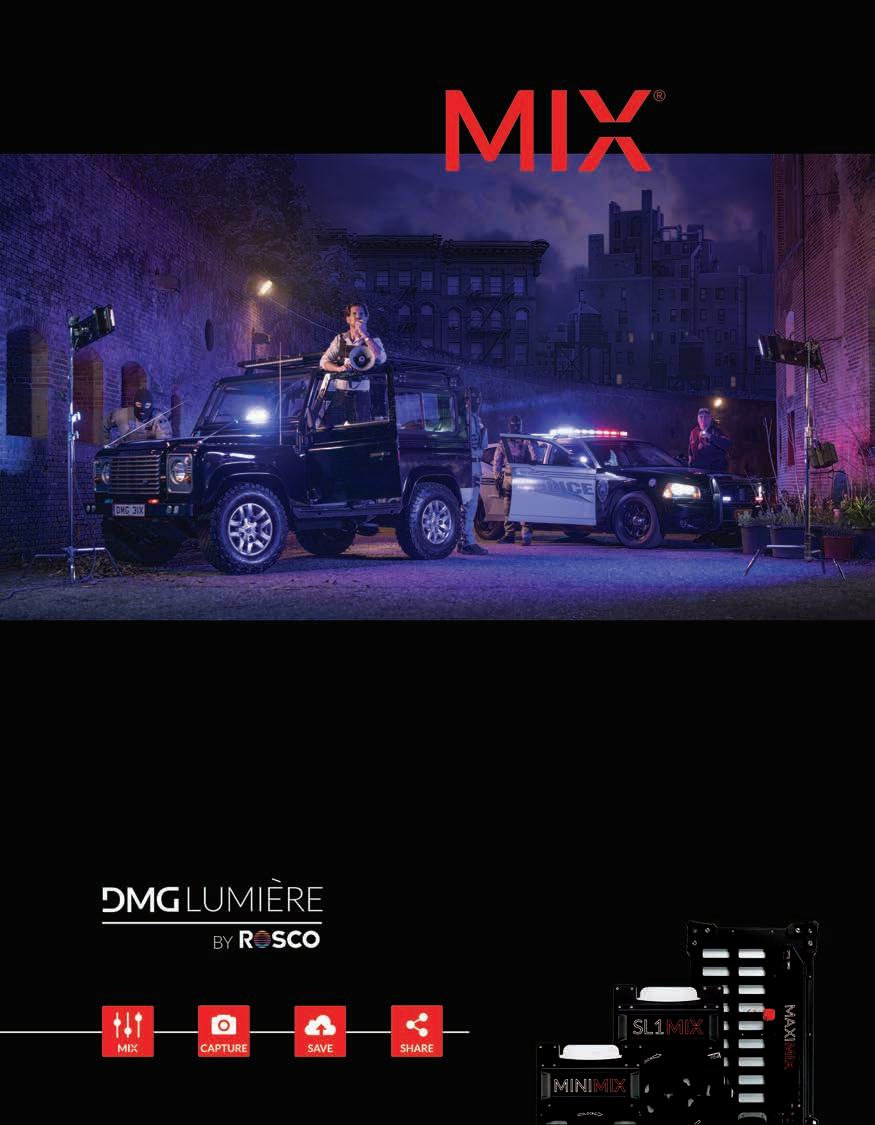

Capture your shot with authentic Rosco gel colors created by MIX LED technology.
Every gel color in the MIX library has been scientifically validated by Rosco’s color experts. Patent-pending MIX technology blends six LEDs to produce a fuller color spectrum than RGBW and RGBA fixtures. With the myMIX app, complete color control is in the palm of your hand.
n experimental stem-cell treatment used for facial reconstruction has terrifying side effects for a young woman originally played by Marilyn Chambers under the direction of David Cronenberg (Eastern Promises) in 1977. Forty-two years later, Rabid gets reimagined by twin siblings Jen and Sylvia Soska (Vendetta) with Laura Vandervoort taking over the lead role. Assisting the Soska Sisters in visualizing the body horror tale were cinematographer Kim Derko csc (A Winter Tale), and camera operators Tamara Jones (Wu Assassins) and Paula Tymchuk (Cardinal). Unique for the project was the high percentage of women crew members. “It did have an effect on the dynamic but in subtle ways,” Derko notes. “The conditions that led us to having two female camera operators was nothing to do with any affirmative action; Paula Tymchuk [B camera] and Tamara Jones [A camera] were the best people around for the job.”

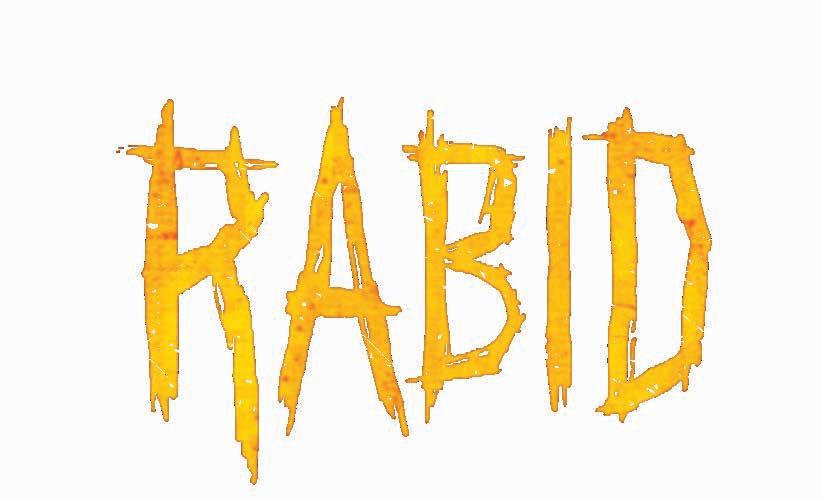

(Left to right) Paula Tymchuk, Kim Derko csc, Jen Soska, Sylvia Soska and Tamara Jones.

Rabid marked the first time that Jones has served as the A camera operator and she enjoyed the experience of being surrounded by female colleagues. “Not only is Kim really good at lighting but also knows when to give you creative control and when to guide you. In that respect, it didn’t have to do with gender. It had to do with being a great human being. I have worked with men like that too,” Tymchuk adds. “The odd thing is that I forget that I’m any gender until it’s brought up. I’m focused on what the shot is, what’s required, and doing my job to the best of my ability.” Other key crew members were gaffer Morgan Sainsbury, key grip Tex Entsch, B camera operator Perry Hoffman (who filled in a few days for Tymchuk), 1 st AC A camera Cylvan Desrouleaux, 2 nd AC A camera Jay Jay Callan, 1 st AC B camera Lem Ristsoo, 2 nd AC B camera Juho Kepanen, camera trainee Daniel Glegg and stills photographer Amanda Matlovich. The new version is an homage to the original. “We did a few scenes driven by David Cronenberg’s cinematic style; however, the script was different,” Derko states. “The Soska Sisters did American Mary, and their forte is body horror, which is part of why they admire Cronenberg’s work. Dario Argento [Suspiria] is a big reference in a lot of the work.” Jones was given a few films to watch as visual references. “I looked at obscure Italian horror films and even The Handmaids Tale. I didn’t have Crave so I had to research that, which of course now I’m hooked because the show is so amazing. I was looking at framing like that and lots of use of foreground. I also did Steadicam so had to figure out how to incorporate that as well,” she says. Listening was a critical part of the job. “From listening you get enough of a feel to understand which way you should go,” Tymchuk notes. “Obviously, with lenses we would know what kind of coverage they were looking for. We were given so much creative space that we could try our own input. If it didn’t work then the Soska Sisters would gently guide us to what they were looking for.” The original cinematography was an influence. “Rabid was an early work of Cronenberg, shot pretty rock and roll, and on film,” Derko notes. “René Verzier [The Morning Man] did a great job. I love that cyan colour which is in that era. We pulled a lot of shots of that cyan colour into the remake and utilized extreme saturation in a way that Dario Argento uses in his films.” A look book was put together for DIT Dwain Barrick. “I sampled a whole bunch of Coca-Cola bottle green glass and had several pictures of those that I gave to Dwain. I said, ‘I want this when there’s a window or a piece of glass.’ Dwain did fantastic tweaks for dailies and kept bringing the iPad in-between setups. We would discuss and he’d try to relay something back, which was similar to the direction we were going.” The other two prominent colours
Laura Vandervoort in a still.
were tobacco and red. “The grading was done at Urban Post with colourist Mila Patriki; we spent a few hours each day for a week when she was colouring grading the finals,” Derko says. Principal photography lasted 20 days. “We shot at a now closed hospital in West Toronto, did a bit of work in a studio in Hamilton and Etobicoke,” Derko states. “I was able to be there for quite a while, five or six weeks before.” A couple of scenes were storyboarded. “It wasn’t the kind of movie where we go into a studio and shot-by-shot we copy the storyboard. It was very location oriented. We worked from floorplans mostly, which is an efficient way to work. This is where the camera operators come in as they can see a beautiful angle somewhere that a storyboard artist or the directors had not imagined.” However, challenges arose from being location dependent. “Some of our locations fell through the day of or we only had a location for a certain amount of time,” Jones remarks. “There were a few things where we needed to quickly improvise. In one location we didn’t have access to close the blinds. The light was coming in from all angles, so we had to shoot in a small contained corner.” Tymchuk notes, “I don’t know how important the actual location was in the sense that the acting, the story, and the Soska Sister’s vision was so strong that it was almost easy to make that

come through visually regardless of where we were.” One of the scenes took place in a tight location. “The alleyway was 30 by 30 feet and we had a false wall on one side and a real wall on the other side,” Tymchuk explains. “There were a couple of 18Ks up in the distance. To get the angles that we needed to do and avoid getting blown out too much in the back, we had to adjust a few things, especially because we had a limited space. I understood why we needed this large light in the distance. We had the two cameras, and Tamara was on the Steadicam so she was moving around more and there wasn’t much room for too much dolly track. I was more or less stationary. To maneuver to find a spot that I could avoid the light, stay out of Tamara’s way, and still capture the action was hard, but I love finding an interesting way to show what is occurring with these challenges.” Camera and lighting equipment were supplied by William F. White. “We were shooting with two cameras a lot so were able to double up if something was particularly good by having them side by side,” Derko states. “We shot on an ARRI ALEXA Mini and I love the palette of ARRI.” The selection of lenses included 18 mm, 21 mm, 25 mm, 29 mm, 35 mm, 40 mm, 50 mm, 75 mm, 100 mm and 135 mm. “I’m a big fan of the Leica lenses and was using a full complement of the Summicron-C. We used the 40 mm and 75 mm a lot.” Dollies, cranes and Steadicam helped to keep the camera moving. “We were trying to think of something interesting for the master shot and go from there,” Jones remarks. “Even the masters they wanted to cut quickly so you did cut into them quite a bit.” 1.85:1 was the decided upon


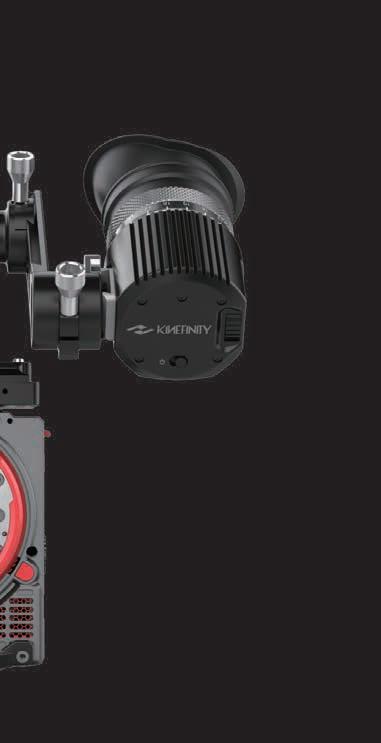
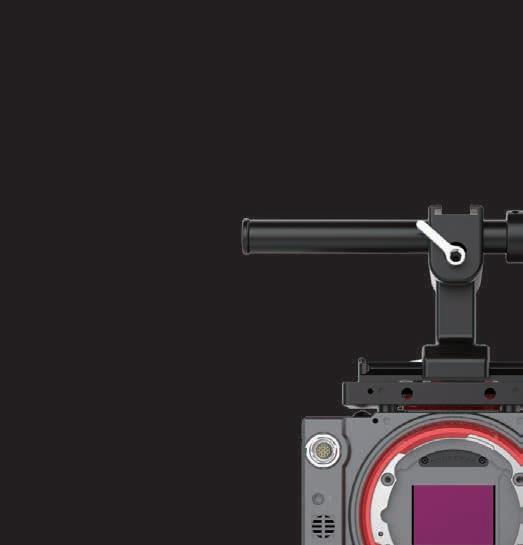
Top: Tristan Risk and Laura Vandervoort Bottom: C.M. Punk and Laura Vandervoort


aspect ratio and the footage captured in a 3.2K resolution. “We did have a camera attached to aRottweiler, which was a GoPro rig which was quite fun,” Derko reveals. “Tamara did a lot of lyrical Steadicam movements.” In order to have foreground elements blur for the dream sequences, two prisms were rigged on grip mounts in front of the lenses. “We needed to have some blurry spooky edges on the frame,” Derko explains. “Jay Jay Callan and Cylvan Desrouleaux rigged these prisms that were remotely controlled so they could move them slowly as the actor was walking through space. It’s subtle work. A corner of the frame would go blurry and a reflection would swing into the shot.” Capturing the visual look of the dream sequences was an ongoing experiment. “The prisms depending on how the light and double images hit them and created the image was all unexpected,” Tymchuk remarks. “That I found to be fantastic. It’s like a Jackson Pollock painting where you put it out there and see what happens and works because the way we were using the prisms it wasn’t as predictable. We put the prisms in front of the lens and turned them to make the double images. Sometimes it was fantastic, and the double images had so much meaning too. Sometimes it wasn’t quite working and would catch a light accidentally. It was challenging because you had to think of the lens that you were using, the images that you were putting on top of each other, the timing of the characters and their movements, as well and incorporating that all into a free-flowing moving shot. I loved it!” Horror is not restricted to a particular camera style. “It’s such a great genre because of the freedom,” Derko observes. “You can take a lot of risks and places you wouldn’t normally go in a more classic show. In terms of lighting, the tools that we’re working with are different. We’re able to put ARRI SkyPanels into DMX and make all kinds of colours that wouldn’t have been so easy to use on a fast-paced shooting schedule. I’m working with the Titan 2 on every show now; they’re colour controlled and I can use every gel from LEE to Rosco to Storaro.” Getting the right colour of the blood was not complicated. “It is easy to correct the colour on set because your monitoring system is good in terms of what you see is what you get.” LEDs were part of the lighting equipment. “I had a lot of Moss LEDs. We were using a rubber tubing like a strip to put colour on them. We put strips of Moss LEDs down a runway with a red plastic coating on them. That was quite fun,” Derko says. Minimal greenscreen was needed. “We had a lot of blood added in visual effects,” she reveals. “There was a lot of painting out of the odd wire, attaching of organs, and people needing to be painted in.” It was important to be mindful when composing shots. “There’s a budget, so we had to be careful of what we shoot because they can’t paint this or that out because it’s too expensive,” Jones remarks. “We also had to frame where the tentacle is going.” There was one practical tentacle on set, which provided the length and girth. “We had an idea of how much space was needed for the image,” Tymchuk states. “I felt in tune with where it was going. I didn’t feel like I was catching up or had to search for something I didn’t understand. The only difficulty for me was at one point Laura Vandervoort was so convincing it was difficult to not jump up from behind the camera and go help her. We all thought that she was in some sort of distress. We had a safe word in case of an emergency.” “The lead actress Laura Vandervoort was fantastic,” Derko remarks. “There were a lot of scenes where I enjoyed working with her where she was knowing that there was going to be visual effects added onto a horror scene. Laura was so able to dramatize scenes and make them real even though we didn’t have the visual effects work on her. There is a dream sequence which is one of my favourites. Tamara, Paula and I loved working with the Soska Sisters so much. We twisted Rabid around, but all the while we’re huge Cronenberg fans. We tried to make it different for the Soska Sisters but still pay as much homage we could to Cronenberg.” Jones is currently the only unionized female Steadicam operator in Canada, which is a situation that she hopes will change. “I’ve had challenging movies, and this was not one of them. You’d want to go to work every day. You’d get up, feel so creative and so good by the end of the day; that had a lot to do with the Soska Sisters.”





